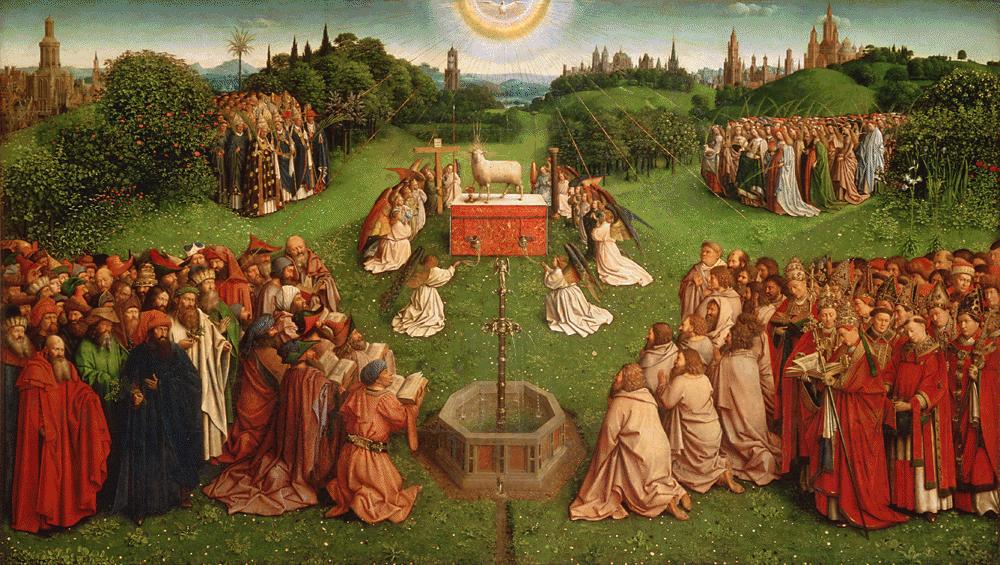The next day [John the Baptist] saw Jesus coming towards him and declared, ‘Here is the Lamb of God who takes away the sin of the world! This is he of whom I said, “After me comes a man who ranks ahead of me because he was before me.” I myself did not know him; but I came baptizing with water for this reason, that he might be revealed to Israel.’... The next day John again was standing with two of his disciples, and as he watched Jesus walk by, he exclaimed, ‘Look, here is the Lamb of God!’ The two disciples heard him say this, and they followed Jesus.
This particular way of addressing Jesus--"Lamb of God"--was compelling enough to early Christians that it found its way into the liturgy of Holy Communion, becoming part of the Roman Rite (from which our Lutheran liturgy mostly derives) in the 7th century and even earlier in the Eastern churches:
Lamb of God, you take away the sin of the world
Have mercy on us
Lamb of God, you take away the sin of the world
Have mercy on us
Lamb of God, you take away the sin of the world
Grant us [your] peace. Amen.
The Lamb is an image of sacrifice, but its connection to forgiving or removing sin is not straightforward. The worship of the Temple had sacrifices for sin; the Passover lamb was not a sin-offering but something else, more like a sign of protection to ward away danger. It's not an image of Jesus paying a penalty for our sins on our behalf, but of Jesus's death protecting and covering us. His death conquers and thwarts death. He is "the Lamb who is slain from the foundation of the world," as Revelation said, but who in the end will reign over heaven and earth.
It's not an easy passage to work with, and a quick search of my files suggests I've never preached on this week's readings before (in fifteen years of regular preaching I haven't missed too many Sundays of our three-year lectionary cycle but this appeas to be one of them). But it's always good to listen for those words that have spoken profoundly to the centuries of Christians who came before us. If they are strange or confusing to us, but are yet preserved in this way, there is probably a good reason for that. It means something to me that both the Word of God, which sets Christ before us in the stories of his life and ministry, and the Sacrament, which makes Christ present to us in a real way under the forms of bread and wine, say to us "Behold the Lamb of God." Look here, see this one, who lives and dies for you!
More on this passage from Sherri Brown at Workingpreacher.org:
The tension sparked by the word of Jesus creates dramatic interactions through dialogue that actively moves his story forward toward its fulfillment on the cross that glorifies both God and the Son and produces a new community of God’s children who have received the Word. Just as the festival of Pentecost celebrates the revelation of God in the Sinai covenant, now Jesus, Christ and Son of God as the Son of Man, reveals God to all he encounters. He shares in the divinity of God, yet he has taken on the human condition completely: Jesus is the uniquely begotten Son of God who fulfills God’s earlier gift of the Law to Moses through the new gift of himself in truth. He is the Lamb of God who heals the broken, sinful relationship between God and humankind (thereby completing the role of the Torah), and the Son of Man who reveals God in the human story by challenging disciples and audiences of all time to “come and see” (John 1:39).


 RSS Feed
RSS Feed